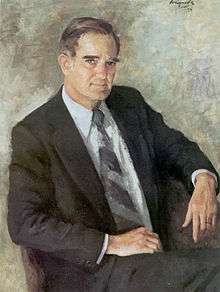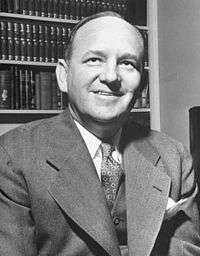Georgia gubernatorial election, 1966
| | |||||||||||||||||||||||||||
| |||||||||||||||||||||||||||
| |||||||||||||||||||||||||||
| |||||||||||||||||||||||||||
| Elections in Georgia | ||||||||||
|---|---|---|---|---|---|---|---|---|---|---|
 | ||||||||||
|
||||||||||
The Georgia gubernatorial election of 1966 was held on November 10. After an election that exposed divisions within the Georgia Democratic Party (giving the Georgia Republican Party a shot at the Governor's Mansion for the first time in the twentieth century), segregationist Democrat Lester Maddox was elected Governor of Georgia by the Georgia General Assembly. The voting also brought future President Jimmy Carter to statewide prominence for the first time.
Democratic nomination
Former Governor Ernest Vandiver was considered the favorite to return to his former job (although governors could not then succeed themselves, they could run again after leaving office), but he dropped out of the race because of health problems. That opened the door for former Governor Ellis Arnall, former Lieutenant Governor Garland T. Byrd, state Senator Jimmy Carter, and two segregationist businessmen, Lester Maddox and James H. Gray, Sr., to run for the Democratic nomination.[1]
Gray, a Massachusetts native, publisher of the Albany Herald and founder of what is now Gray Television, was a former Georgia Democratic state chairman who defended segregation in his northern accent before the 1960 Democratic National Convention in Los Angeles. In the primary race, Maddox had often called upon Gray to leave the race, having said that his opponent was "going down like the Titanic". Gray remained in the race and finished fourth in the primary. He declared neutrality in the Maddox-Arnall runoff election, not openly supporting either candidate. However, one of Gray's associates, Roy V. Harris of Augusta, a member of the Georgia State Board of Regents, supported Maddox over Arnall. Gray supporters attempted to entice Maddox to leave the race with a $100,000 payment. Gray denied involvement in the scheme but would not, on Maddox's request, take a lie detector test.[2]
Democratic primary election results
Arnall won the first primary, but because no candidate received a majority, he and Maddox were forced into a runoff, per Georgia law.
Primary (September 13, 1966):[3]
- Arnall: 231,480 (29.38%)
- Maddox: 185,672 (23.56%)
- Carter: 164,562 (20.89%)
- Gray: 152,973 (19.41%)
- Byrd: 39,994 (5.08%)
Runoff (September 27, 1966):[4]
- Maddox: 443,055 (54.29%)
- Arnall: 373,004 (45.71%)
Lieutenant Governor
State House Speaker George T. Smith was the Democratic nominee for Lieutenant Governor of Georgia, after he defeated incumbent Peter Zack Geer in the primary. He went on to win the general election.[5]
Republican nomination
Howard Callaway, also known as "Bo", the first Republican to be elected to the U.S. House of Representatives from Georgia since Reconstruction, was the Republican nominee.
No other Republicans sought down-ballot constitutional offices. State Senator Holden Eugene "Gene" Sanders of DeKalb County, a moderate Republican, sought to run for lieutenant governor, but Callaway said that Sanders did not follow the proper procedures. The GOP strategy was to shun all other statewide races for fear that a full ticket would unify the Democrats. The Atlanta Journal, which ultimately endorsed Callaway, claimed that key Republicans were a clique who hoped to build the party from the governor's office. The Athens Daily News depicted traditional Georgia Republican leaders as "would-be politicians [who viewed the party as] personal property and who made no real effort to expand into a broad-based and effective political organization."[6]
General election results
| Party | Candidate | Votes | % | ± | |
|---|---|---|---|---|---|
| Democratic | Lester Maddox | 450,626 | 46.22% | ||
| Republican | Bo Callaway | 453,665 | 46.53% | ||
| Independent (write-in) | Ellis Arnall | 69,025 | 7.08% | ||
Some people, unhappy with both major nominees, took the "Go Bo" of Callaway's campaign and expanded it to "Go Bo, and take Lester with you". A write-in campaign for Arnall prevented any candidate from winning the majority. Georgia law at the time allowed the Georgia General Assembly to select the governor if no candidate received more than 50 percent of the popular vote. The legislature, dominated by Democrats, selected Maddox, although Callaway received more popular votes.[7]
References
- ↑ New Georgia Encyclopedia
- ↑ Billy Hathorn, "The Frustration of Opportunity: Georgia Republicans and the Election of 1966", Atlanta History: A Journal of Georgia and the South, Vol. XXXI (Winter 1987-1988), pp. 38-39
- ↑ Georgia Official and Statistical Register, 1965–1966 – page 1738
- ↑ Georgia Official and Statistical Register, 1965–1966 – page 1779
- ↑ "The Advocate", University of Georgia School of Law
- ↑ Atlanta History, p. 39
- ↑ OurCampaigns.com: GA Governor general election
.jpg)


